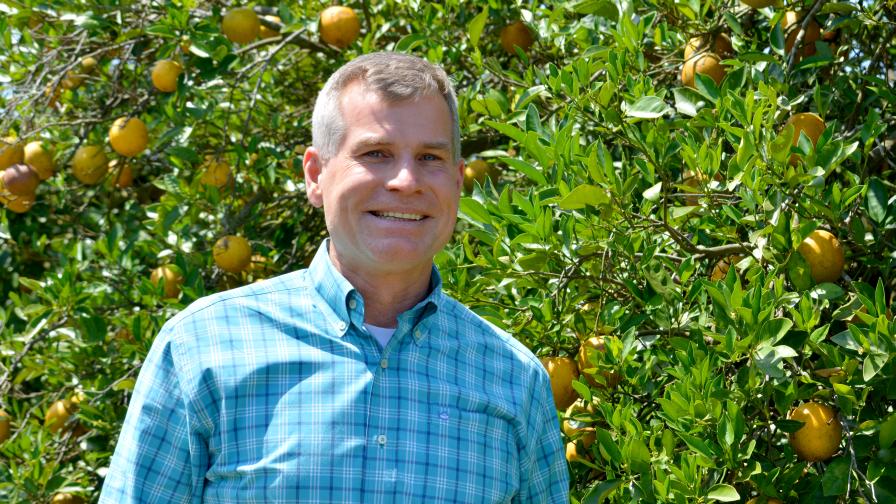
Florida Grower’s 2021 Citrus Achievement Award winner Larry Black has just about seen it all in the field during his farming career.
Photo by Frank Giles
This the second installment of four special Q&A features honoring Larry Black, the 2021 Florida Grower Citrus Achievement Award winner. He is VP and General Manager of Ft. Meade, FL-based Peace River Packing Co.
How has your fertilizer and plant nutrition program changed since HLB come on the scene?
BLACK: Maintaining optimum tree nutrition is critical with endemic HLB. Infected trees are inefficient in utilizing available nutrients. We have experimented with controlled-release products and are currently using a hybrid approach utilizing 30% liquid and 70% dry formulations. Liquid applications are a great tool during the dry spring months. We have increased the rates of secondary and micronutrients in our applications. Tripti Vashisth, a Citrus Extension Specialist with UF/IFAS, is doing great work evaluating the use of elevated micronutrients in a long-term study that has been a great guide as our program continues to evolve.
Adjusting pH to 5.5 to 6.0 through acidification of irrigation water and soil sulfur applications increases the availability of deficient nutrients. Our groves in this ideal pH range have improved tree health, less fruit drop, and overall higher production.
How does your family’s farm business structure work?
BLACK: Peace River Packing Company converted to a cooperative structure in the early 1970s when Peace River became a member of Citrus World, a federated cooperative.
Peace River Packing Company is owned by the third and fourth generation descendants of D.H. Varn, Sr. The family is rather large, and the cooperative structure has allowed for good governance and stewardship of the business. Members of the family that continue to grow citrus are the cooperative’s members, and this base will continue to evolve over time. We are able to operate with the efficiencies of a large grower as we make investments, purchase inputs, and market
our crop.
How do you manage psyllids in the groves?
BLACK: We rouged HLB-infected trees through 2012 and worked hard to operate effective CHMAs (citrus health management areas) with our neighbors to minimize the spread of HLB by infected psyllids. We utilized aerial, ground, and border sprays with a goal to minimize psyllids in our groves and delay the 100% infection of our trees. Over time, we have adopted a threshold approach, timing our psyllid sprays with tree flushes. We now target pesticides with minimal impact on beneficial insects.
Lukasz Stelinski, an Entomologist with UF/IFAS, continues to develop useful guidance for growers on the optimum population threshold.
There are many examples of very productive groves around the state that have never aggressively targeted psyllids. HLB did not come with an instruction manual, so our programs have evolved over time as we have learned from research and our fellow growers as we continue to navigate the challenges presented by endemic HLB in Florida.









